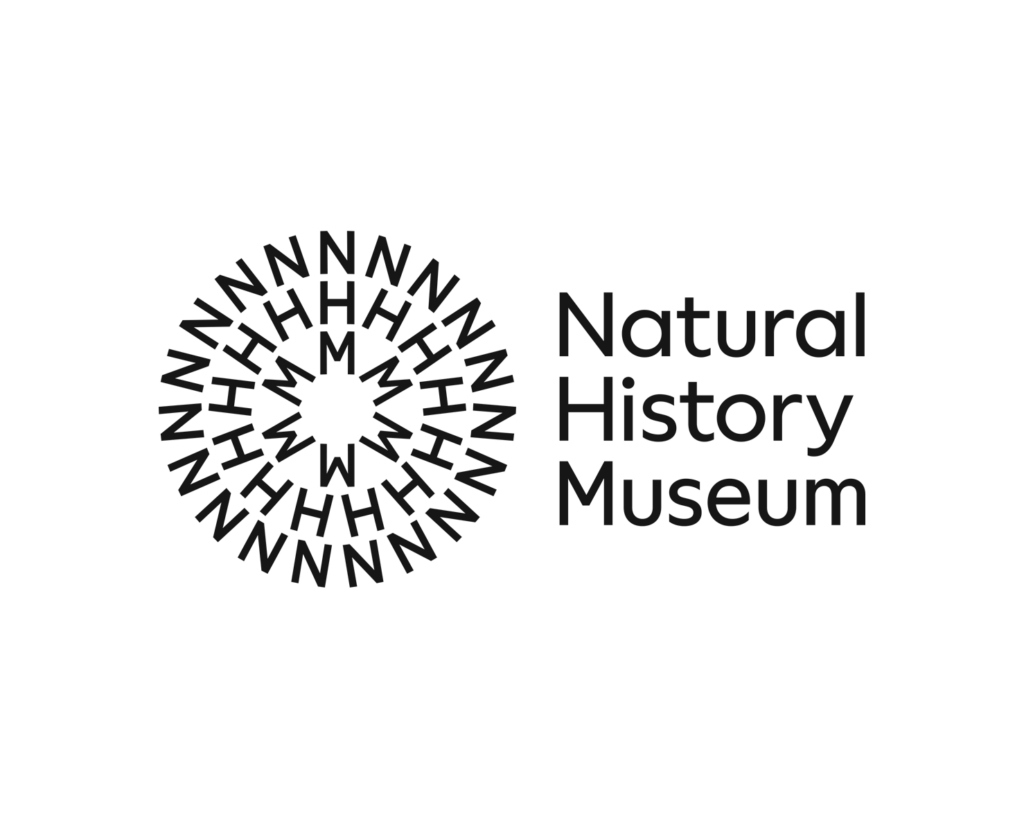1.1 Sloane Lab: Looking back to build future shared collections
The Sloane Lab project is funded by the AHRC as part of the initiative Towards a National Collection (TaNC), a major investment using digital technology to create a unified national collection of the UK’s galleries, libraries archives and museums (GLAMs) to maintain global leadership in digital humanities and arts research (for more information see https://sloanelab.org and https://www.nationalcollection.org.uk/).
The project brings together University College London and Technical University Darmstadt, the British Museum and the Natural History Museum with the British Library as external partner, around a shared interest to re-unite Sir Hans Sloane’s original 1753 collection. Known as the founding collection of the British Museum, over the years the collection was distributed across the three GLAM institutions involved in the project. Building on current digital resources available in the three institutions and beyond, the main aim of the project is to create a single, easily accessible online digital resource (an online lab) to facilitate its use and interpretation by wider audiences. In this respect, the project main aims and objectives are to:
- Bring Sloane’s historical catalogues and present-day cataloguing systems together
- Link them to other existing digital collections of Sloane material
- Learn how to better support different ways to search the collections and accommodate the needs of any “curious or interested person”
The project also aims to explore how digital technologies can help us tell new stories about what can be rediscovered and reimagined by linking collections. Consequently, other important aims and objectives of the project include:
- Harness the power of digital technologies to make specialist users and members of the public more aware of the absences in museum collections and the relationship between historical and contemporary knowledge systems reflected in museum catalogues
- Facilitate new searches and new uses to advance new research topics
- Help heritage institutions select the most useful technologies from the many that are available for releasing and interlinking their collections
1.2 Origins of the Sloane Collection and current access to its catalogues
The Sloane collection was assembled by Sir Hans Sloane from around 1680. For more information on Sir Hans Sloane and his collections see the Long Statement on Sloane Collections. After his death in 1753, the collection was bought by the state on behalf of the nation and moved to a new institution, the British Museum, which was created for the purpose of making accessible to the public the vast number of objects including:
- 50,000 books and manuscripts
- 30,000 coins and medals
- hundreds of thousands of natural history objects
- hundreds of paintings and albums of prints and drawings
- thousands of ethnographic objects and antiquities
All these objects were described by Sloane and his assistants across manuscript catalogues. More specifically, Sloane and his assistants described the objects in the collection across more than 40 original manuscript catalogues, and out of those, so far only 5 have been transcribed and made available online (for the transcribed catalogues, see https://reconstructingsloane.org/enlightenmentarchitectures/2020/01/02/digitised-catalogues-2/; for more information about his collections already online see https://sloanelab.org/sloanes-collections/).
Multiple challenges face users of the collections across the different institutions where they are held, namely the Natural History Museum (NHM), the British Library (BL), and the British Museum (BM), each holding different parts of the original Sloane collection. Digitisation of archives and objects, cataloguing and digital search tools have progressed in different ways across the institutions. The project aims to create a single, easily accessible online platform and will do so by:
- Uniting the records of Sloane’s surviving objects and original catalogues, the first ‘national collection’, across the NHM, BM and BL
- Creating the ‘Sloane Lab’ digital platform where the reunified and extended digital collection will be made searchable by a wide range of users and open to further analysis and interpretation for wider public engagement with the material
In this respect the project will also serve as a case-study for those in the heritage sector who are interested in bringing together heterogeneous digital collections so that audiences can learn and benefit from them.
1.3 Participatory Methodology
The project plans to deliver on its aims and objectives by using a participatory design methodology focused on:
- Identifying the kind of questions that ‘curious or interested’ individuals and communities (echoing sentiments expressed by Sloane himself) might wish to ask of Sloane’s collections, and by extension a ‘national collection’
- Learning how to support individuals and diverse communities of interest in different ways to search, use, visualise and transform Sloane’s records
- Exploring the ways in which sustained engagement of a community of practice can transform knowledge about unified collections, in this instance Sloane’s collection
It will achieve this by engaging co-design participants with a wide range of experiences, expertise and knowledge that are relevant to the project and the collections. These include people with various expertise and interest in the collections, researchers in various disciplines, members of societies, historians, heritage professionals, artists, and people interested in the design of the Sloane Lab digital platform, as well as interested individuals and communities.
We aim to work with the project’s internal staff, digital specialists and co-design participants, to help with the creation of the digital tools that, amongst other things, will support the search functionality and the visualisation of the information held in the catalogues. The process embeds ethical participatory design at the heart of the Sloane Lab, aligning participation with shared design outcomes, while gaining a better understanding of the themes, challenges and solutions that emerge from such a process.
The co-design methodology reflects the project’s interest in expanding the ways digital tools are created by shaping them around users’ needs and aspirations. In technical terms, the idea is to combine the design of the Sloane Lab with methods that have the capacity ‘to develop responses to research hypotheses and questions and explore alternatives in reconfiguring data assemblies.’[1] For this reason, participants will be involved in a series of activities that form the building blocks of participatory design including:
- in person workshops
- online and in person digital activities
- one-to-one interviews
- focus groups
The activities will facilitate exploration of questions users might want to ask of the collections, ways of connecting the information across the various catalogues and presenting it in useful ways through online tools that facilitate the visualisation of data, as well as the words that can be used to search the catalogues, and more. The expected outcome is to facilitate a shared knowledge base across different disciplines, areas of expertise, and viewpoints that can leave a legacy for the participants, the members of the Sloane Lab team, and TaNC beyond the timespan of the project.
The Sloane Lab participatory plan has been developed through consultation with the Sloane Lab team. It has mobilised the individual competences of team members and helped delineate project components. Significantly, it has shaped a participatory technical plan that includes activities running throughout the length of the Sloane Lab project until summer 2024, driving information to the technical team at key junctures of the development of the Sloane Lab. Participants’ contributions are captured with a range of tools including feedback forms, video and audio documentation. These will be used to:
- Learn how digital tools enable people to engage with online collections of national, international and global value in ways that are meaningful to them
- Shape the various functionalities of the Sloane Lab to support a wider range of uses of the Sloane collections
- Produce material for the Sloane Lab website that reflects participants’ views and contributions to be made available to a wide audience
- Produce documentation to disseminate information about the Sloane Lab participatory co-design process
- Produce a range of outputs to disseminate this method further including, but not limited to, funding and policy makers
1.4 Research Ethics
The described participatory methodology has undergone the ethical scrutiny of UCL Research Ethics Committee (approval ID: 22509/001) to ensure that a high standard ethical practice is followed in the process of engaging co-design participants in the project activities and to best support an inclusive and diverse research practice which the project aims to conduct. All data will be handled in accordance with UK data protection legislation. Prior to each participatory engagement activity, participants will receive an information sheet and consent form that describes what kind of data the project will collect for the purpose of the research.
1.5 Sloane Lab Community Fellowships
In addition to co-design participants, the Sloane Lab will appoint 10 Fellows. Each fellowship will be awarded £7,500 and will last for 3 months. The Fellows will undertake creative, critical and/or research-led projects with the Sloane Lab, demonstrating the new forms of analysis and interpretation the project will unlock. The fellowship programme offers an exciting opportunity to exemplify the research capacity of the Sloane Lab. Research areas may include, but are not limited to local and family history, object biography, critical heritage, indigenous and devalued knowledge, or the transferability of the technology developed by the Sloane Lab.
For more information about participatory activities please contact us to bring you in touch with Dr Alda Terracciano and for more information about Fellows in Residence with Marco Humbel.
[1] Bannon, L., Bardzell, J. and Bødker, S. (2018). Reimagining participatory design. Interactions, 26(1): 26–32 doi:10.1145/3292015. https://dl.acm.org/doi/10.1145/3292015 (accessed 22 September 2022).





